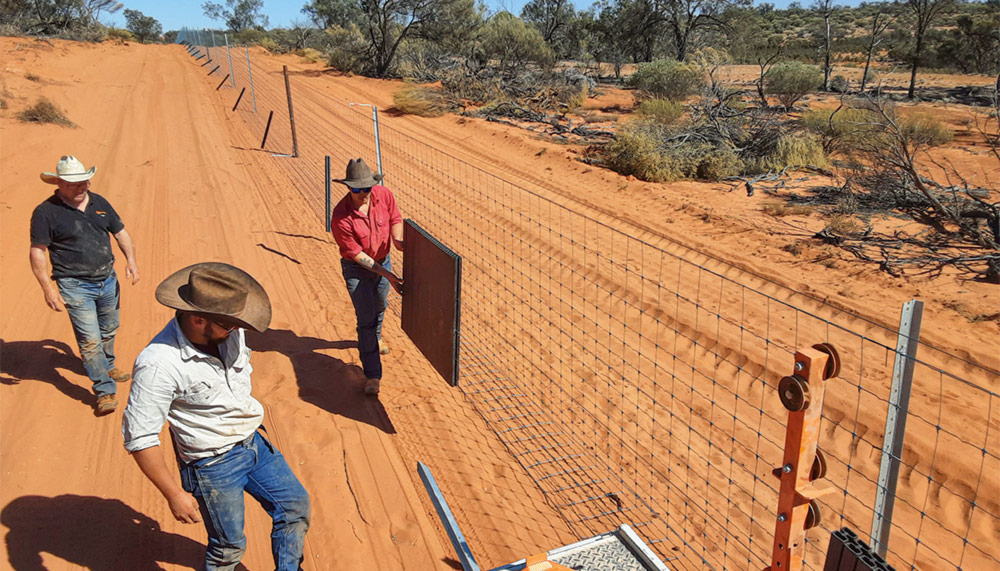The rebuild of the dog fence in SA coincides with better conditions that are seeing sheep return to the grazing plains.
Story John Dunn Photo Department of Primary Industries
Sheep are returning to the grazing plains in SA’s far north and north-east. For the past decade it has not been possible for station owners to have their Merinos roam the gently undulating and much sought-after country south of the Strzelecki Desert and bounded by the border with NSW and extending hundreds of kilometres to the west. Numbers of wild dogs and dingoes had made it unsafe for sheep, and so they were restricted to safer areas in the south of the state.
SA’s century-old, 2,150km dog fence – part of the 5,614km national barrier – was built between 1880 and 1885 to protect sheep and other stock in the southern and central areas from canines. “Uncontrolled and unchecked, the dingo is single-handedly capable of rendering sheep-grazing a non-viable proposition in most of Australia’s grazing lands,” wrote Leith Yelland in his 2001 book Holding the Line.
While the fence has played its part in preventing Yelland’s warning coming to pass, it has deteriorated. Large sections have either fallen down due to weather or sand erosion, or been knocked over by kangaroos, emus, feral camels and even wombats. Therefore, it was proving no deterrent to the predators that caused huge farming losses and a substantial dent in the state’s $4.2 billion a year livestock industry. Sheep are no match for marauding mobs of vicious dogs, and landowners in this area soon realised they would have to abandon significant parts of their land before considerable sheep quantities were wiped out.
Now, however, there’s a new fence well on the way to completion, allowing the re-opening of substantial tracts of land.
This story excerpt is from Issue #144
Outback Magazine: August/September 2022









